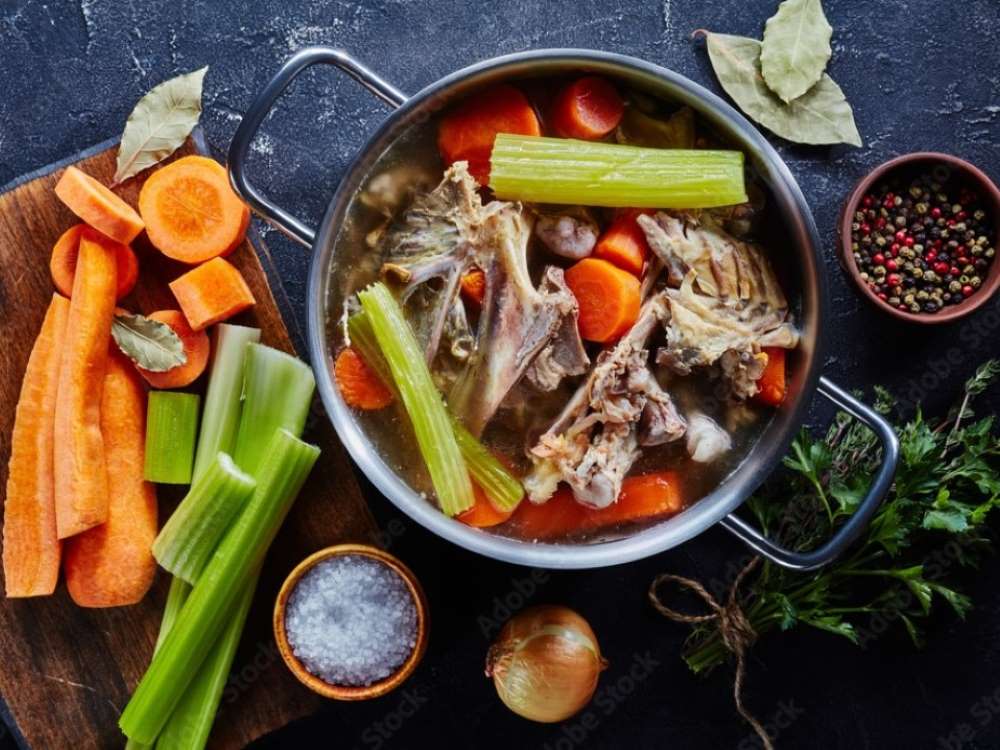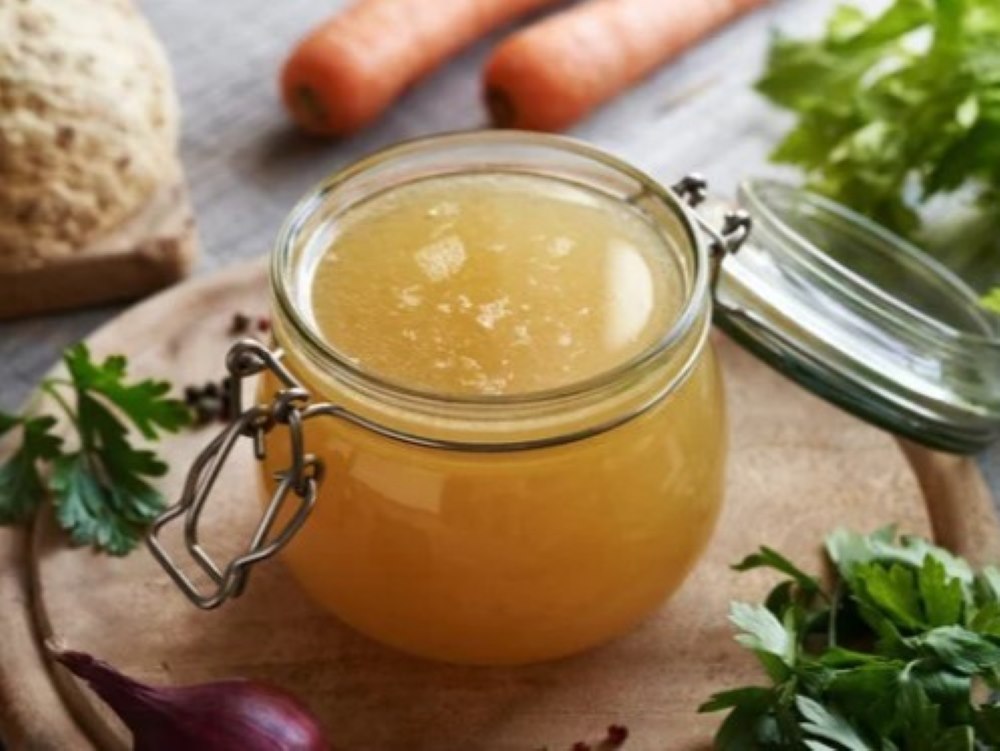Chicken Stock vs. Broth: Which is Right for You?
The components, cooking techniques, and intended applications of each determine how chicken stock and chicken broth differ in terms of flavor, texture, and nutritional value.

Exploring Chicken Broth
The main ingredients of chicken broth are the meaty portions of the poultry, which frequently include some bones, boiled with a variety of aromatics like garlic, herbs, and spices, as well as vegetables like onions, carrots, and celery. The distinctive flavor of the broth—which is lighter and tastier than stock—comes from the inclusion of meat.

Preparation and flavor broth:
- Broth takes only a short while to cook—usually 1 to 2 hours. This amount of time is adequate to bring out the flavors in the meat and veggies.
- Salt and other spices are added to broth to give it a pleasing and full flavor. This allows it to be eaten on its own as a soup or as a foundation for lighter meals like risotto, chicken noodle soup, or sauces that don’t emphasize a strong chicken flavor.
- Because less gelatin is released from the bones (if any are present) during the shorter simmering period, broth often has a thinner consistency than stock.
Ingredients for 5 liters of Chicken Broth:
- 1.5 kg chicken (a combination of meat and bones)
- 3 large carrots, chopped
- 3 celery stalks, chopped
- 2 large onions, quartered
- 4 garlic cloves, smashed
- 10-12 cups of water (to make up to 5 liters)
- 2 bay leaves
- A few sprigs of fresh thyme
- A few sprigs of fresh parsley
- Salt and pepper to taste
Exploring Chicken Stock
The primary ingredient in chicken stock is chicken bones, though it can also contain some residual meat scraps. To give stock a deeper, richer, and more nuanced flavor, the bones are frequently roasted before simmering. Though not as much as in broth, vegetables and aromatics are nevertheless used because the main objective is to bring out the rich, deep taste of the bones.

Preparation and flavor stock:
- Stock is cooked for an extended amount of time, usually 4 to 6 hours or longer. The longer simmering period facilitates the release of gelatin from the bones, which adds to the rich, dense texture of stock.
- During cooking, stock is usually not as intensely seasoned as broth. Because it isn’t seasoned, stock provides a more flexible foundation in recipes where the cook wants to have greater control over the dish’s flavor and seasoning. Stock has a thicker, more viscous viscosity due to the gelatin extracted during the lengthy simmering process, which is perfect for giving gravies, stews, and sauces body.
- Stock’s gelatin adds mouthfeel and nutritional value by delivering protein and other nutrients that were taken out of the bones and connective tissues.
Ingredients for 5 liters of chicken stock:
- 2 kg chicken bones (necks, backs, wings, or carcasses)
- 3-4 carrots, chopped
- 3-4 celery stalks, chopped
- 2 onions, quartered
- 4-5 garlic cloves, smashed
- 10-12 cups of water (to make up to 5 liters)
- 2 bay leaves
- Salt (optional, as stock is usually seasoned during the final dish preparation)

In summary,
Although both chicken broth and chicken stock are essential ingredients in cooking, their functions differ due to their distinct flavor profiles, textures, and ways of complementing different foods. Because it’s seasoned and lighter than other soups, broth works well either on its own or in recipes that call for a subtle chicken flavor. Conversely, stock provides a strong base for recipes that call for richness, complexity, and concentrated flavors, while still allowing the chef to season and tweak the meal to suit their tastes.


